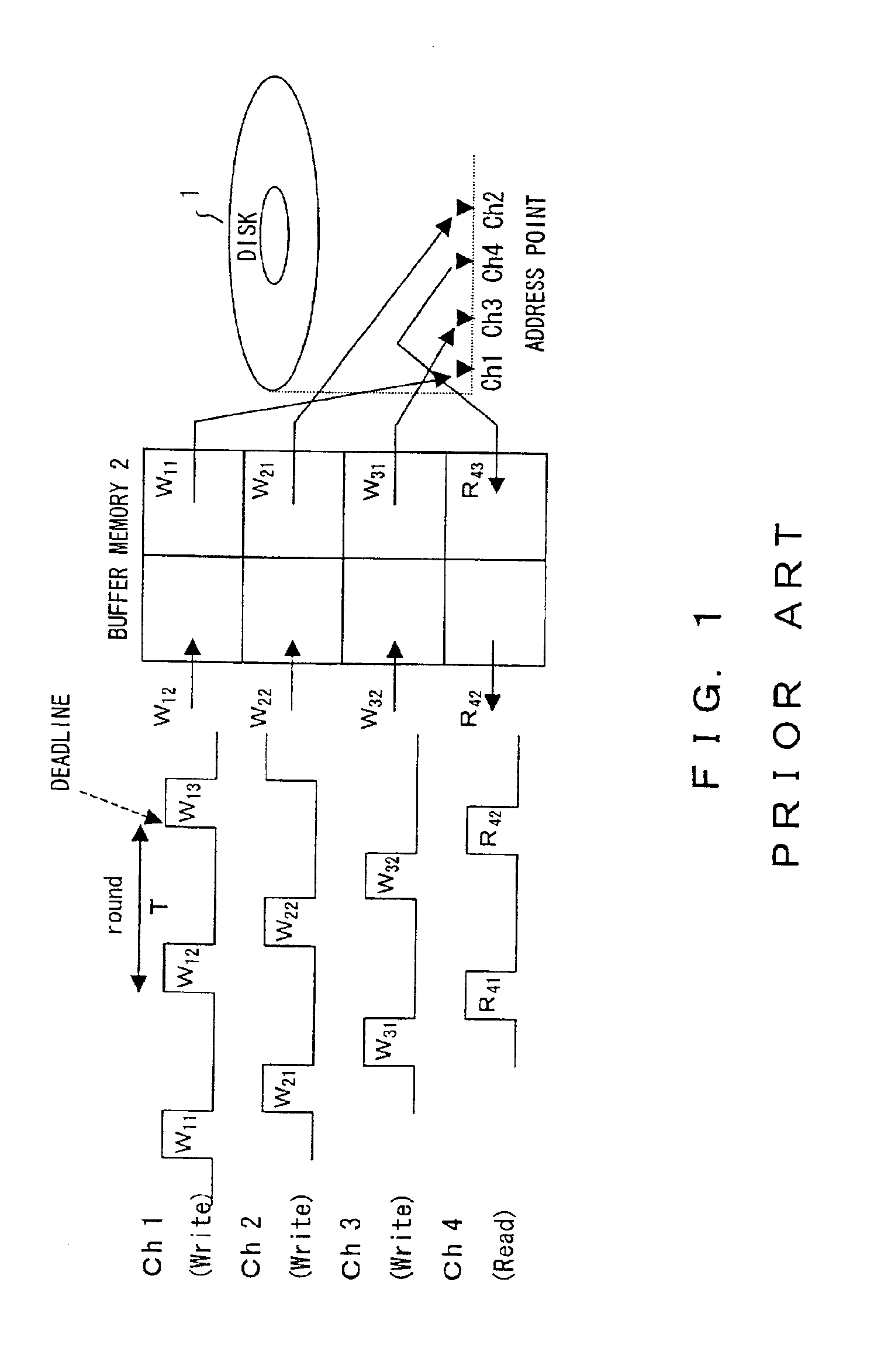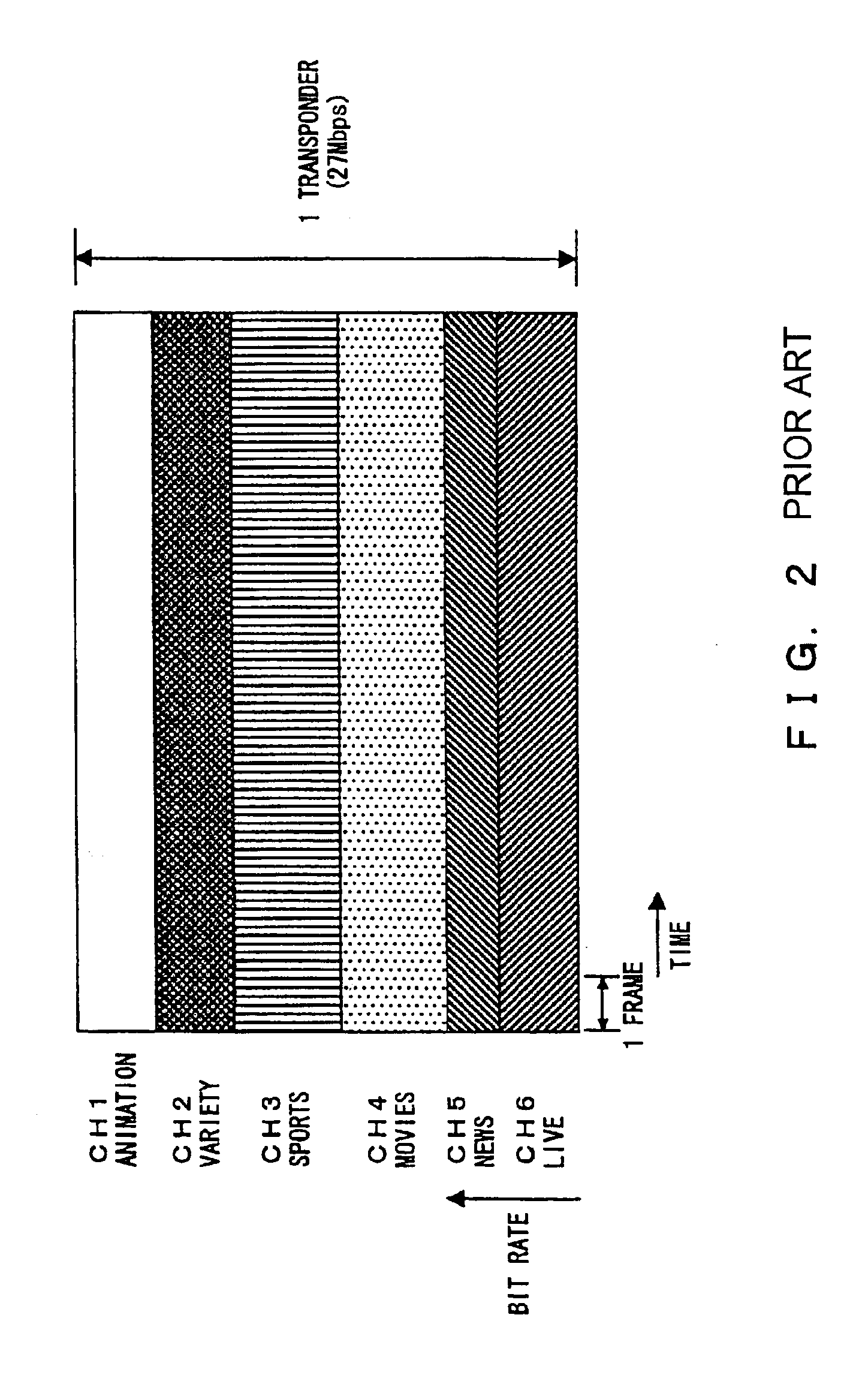Access control apparatus and method for controlling access to storage medium
a control apparatus and storage medium technology, applied in the direction of electronic editing, digital digital analogue information signals, instruments, etc., can solve the problems of long seek distance between channels, inadequacies for real time processes, and preventing real-time processes of success, so as to achieve the effect of quick reading through channels
- Summary
- Abstract
- Description
- Claims
- Application Information
AI Technical Summary
Benefits of technology
Problems solved by technology
Method used
Image
Examples
first embodiment
[0414]Described below first is the In this embodiment, the total storage function is obtained without the access time including the moving time (seek time) between zones, and the number of channels for the processes taken into account, the obtained function is compared with the above mentioned total request function, and a zone for use in attaining the function is selected.
[0415]As a result, the recording method in the steps 1 through 3 is determined as follows.
[0416]Step 1: The total storage function of the zones 1 and 2 is 18.75 Mbps, and is higher than the total request function of step 1. Therefore, data is distributed and recorded in the zones 1 and 2.
[0417]Step 2: The transfer rate (=17.5 Mbps) of the zone 1 is higher than the total request function in step 2. Therefore, the data is recorded in the zone 1.
[0418]Step 3: Since the total storage function of the zones 2 and 6 is 25 Mbps, and is higher than the total request function in step 3, the data is distributed and recorded...
second embodiment
[0423] described below, the total storage function is obtained with the access time including the moving time (seek time) between zones taken into account, the obtained function is compared with the total request function in each step, and a zone for realizing the function is selected. In this case,
[0424]Access time=100 ms×distance between zones
[0425]Distance between zones=difference between numbers of two selected zones
[0426]Assuming that the access time of 100 m (50 ms for one way) is required to move to an adjacent zone. The longer the distance between the zones, the longer the access time proportional to the moving distance of the head.
[0427]As a result, the recording method in each step is determined as follows.
[0428]Step 1: In response to the total request function of 18 Mbps (recording through three channels), the zones 2 and 3 whose total storage functions (=(20+22.5)×0.9 / 2) exceed the total request function including the access time (100 ms) are selected to record the block...
third embodiment
[0435]In the third embodiment described below, the total storage function is obtained with the moving time (seek time) between zones and the number of channels to be processed taken into account, the obtained function is compared with the total request function in each step, and a zone realizing the function is selected. In this embodiment, it is assumed that the data through each channel is distributed and recorded for convenience in individually reading or deleting the data.
[0436]As a result, as described below, the recording method in steps 1 through 3 is determined.
[0437]Step 1: In response to the total request function of 18 Mbps (recording through three channels), the zones 2 and 3 whose total storage functions (=(20+22.5)×0.9 / 2) exceed the total request function including the access time (100 ms) are selected to record the block data through Ch1 through Ch3 alternately in the zones 2 and 3. In this example, three channels are used, and the data through Ch1 and Ch2 is recorded...
PUM
| Property | Measurement | Unit |
|---|---|---|
| thickness | aaaaa | aaaaa |
| thickness | aaaaa | aaaaa |
| pit length | aaaaa | aaaaa |
Abstract
Description
Claims
Application Information
 Login to View More
Login to View More - R&D
- Intellectual Property
- Life Sciences
- Materials
- Tech Scout
- Unparalleled Data Quality
- Higher Quality Content
- 60% Fewer Hallucinations
Browse by: Latest US Patents, China's latest patents, Technical Efficacy Thesaurus, Application Domain, Technology Topic, Popular Technical Reports.
© 2025 PatSnap. All rights reserved.Legal|Privacy policy|Modern Slavery Act Transparency Statement|Sitemap|About US| Contact US: help@patsnap.com



